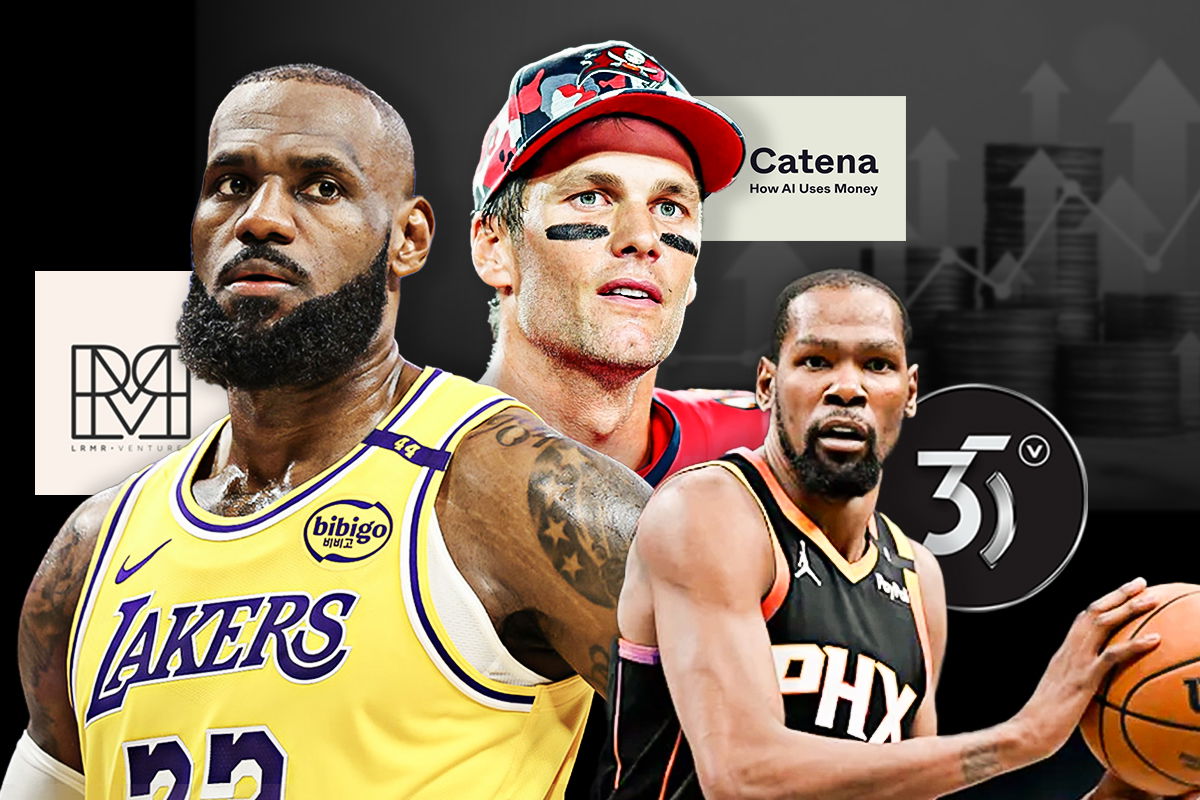

Athletes are more than just players. Teams are more than just franchises. In this dynamic world of business and venture capital, both team owners and the players are emerging as powerhouses. They are now the key players driving a sea-change in the world of venture capital. The focus is shifting from real estate to Artificial Intelligence and new-age tech platforms. Here is what the transformative shift looks like.
Watch What’s Trending Now!
NFL family offices are increasingly shifting away from traditional bets
AI is one of the fastest-growing sectors in the current business world. And American sports team owners are not sitting quietly—they are actively getting involved:
ADVERTISEMENT
- Wilf family: Minnesota Vikings owners, and Milwaukee Brewers majority shareholder. Mark Attanasio invested in GameOn, an AI-powered chat platform.
- Kraft Group: Signed a five-year agreement with NWN to build AI-powered workspaces for the future.
- Arthur Blank: Blank’s AMBSE Ventures invests in early-stage start-ups focused on sports analytics.
In an exclusive interview with EssentiallySports, David Steele of Plug and Play opined, “Family offices are starting to get a little bit more aggressive in their investments…. Maybe less in the traditional real estate, looking more into the AI space, or into EV, or wherever else that they are looking at (sic!). Once the generations are—get down to kids and grandkids, we will see a pretty big shift in the family office investments.”
What is the reason they are bullish on AI-focused startups? The data below explains the key reason why AI is not the next, but the current, hotspot of growth.
ADVERTISEMENT
- Global Market Size: $279.22 billion in 2024
- Growth Rate: CAGR of 35.9% between 2025 and 2030.
- Largest Market: North America
- Fastest-growing Market: Asia-Pacific
Source: Grand View Research
ADVERTISEMENT
The sports team moguls are invested in AI for three key reasons:
Top Stories
DK Metcalf Awaits Huge Punishment From NFL After Controversial Incident vs Detroit Lions

Jared Goff Calls Out Refs’ Multiple Mistakes After Lions’ Loss

Dana White Cuts Former MMA Champ From the UFC, Again

Prayers Pour In From Terrell Owens as 275lbs Former Cowboys Player Announces Major Health News

Dak Prescott Publicly Accuses Cowboys Locker Room of Giving Up After Jerry Jones’ 1-Word Reaction

Chiefs’ Chris Oladokun Reveals Patrick Mahomes’ Gesture After Titans Game Amid Gardner Minshew’s Injury

- Growth potential: The financial return in the AI sector is comparatively higher than in other sectors. McKinsey’s annual research survey found that venture capital flow in AI has more than doubled between 2017 and 2022. According to the survey:
- 83% of brands shared that leveraging AI was a top priority.
- Global AI investment was projected to reach $200 billion by 2025.
- The United States held the most prominent investment ($328,548 billion).
ADVERTISEMENT
- Long-term vision: Investing in AI is part of their core business strategy. Investing in AI has varied potential. The future of AI is intertwined with healthcare, logistics, real estate, and media.
- Future-proofing asset: AI is also one of the quickest-evolving industries. Technologies go through a periodical cycle of upgradation, and AI is evolving faster than ever. So, by investing in AI, business owners are also future-proofing their already accumulated assets in real estate, finance, and manufacturing.
Clearly, the business moguls are looking at AI as the next unicorn. Just as wearable technologies and sports betting once were. From leveraging analytics to offering a more personalized fan experience, owners are heavily reliant on AI and analytics start-ups.
However, it would be a grave error to think that only team owners are invested in tech startups. Athletes have now become the next big venture capitalists. From Tom Brady to LeBron James, players are opening a second career after their retirement: heavyweight investors.
ADVERTISEMENT
Athlete-VC crossover is booming
Before we deep dive into the instances of players investing in various start-ups, let’s first understand the key reasons they are keen on investing:
- Players have a short career:
- Average NFL career: 3.3 years.
- Average NBA career: 4.8 years.
- Average NHL career: 4.7 years.
- Average MLB career: 5.2 years.
- Salaries have a wide disparity:
- Average NFL salary: $3.5M
- Average NBA salary: $11.5M
- Average NHL salary: $3.5M
- Average MLB salary: $4.6M
ADVERTISEMENT
A career span of 3-4 years, with an average salary of $3.5-$10M doesn’t sound too bad. But after taxes, players take home significantly less than what seems to be there on paper. More importantly, once their on-field career is over, only a handful, and mostly the top players, get a chance to work at the booth. But for top players the contract is hefty, offering them more scope to diversify their investment.
Steele added in the ES Exclusive Interview: “Contracts are just growing and growing and growing. So now they do have more capability to deploy capital. So, if you look at legacy Hall of Famers, where that capital just wasn’t there, where now they are actually in their entrepreneurship side, where they are still trying to grind it out to get there. Whereas you have some of these guys making $35,$40, $50M in a year just off of a single contract. So they are looking to deploy it in a different way.” For example:
- LeBron James: Uninterrupted and Spring Hill Company invested in media and entertainment.
- Tom Brady: TB12 Sports & Autograph invested in training, recovery, and nutrition.
- Kevin Durant: Thirty Five Ventures invested in VC, media, and sports business.
ADVERTISEMENT
As Marques Colston, former wide receiver of the New Orleans Saints, wrote on a LinkedIn post, “There hasn’t been a better time to be an athlete in the VC space. The stage has been set, and our voices are being heard in a way that it hasn’t existed before.” The athlete-led venture capital space has exploded in recent years. It is expected that athlete investment will bring more inclusivity and diversity to the venture capital space.
ADVERTISEMENT
ADVERTISEMENT
ADVERTISEMENT

